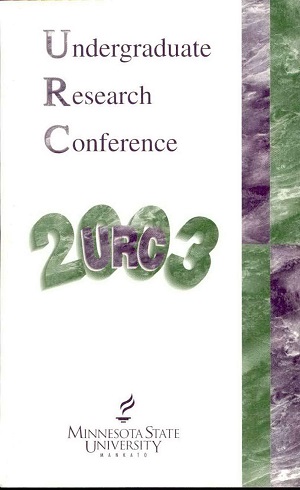The Effects of Room Color on Stress Perception: Red Versus Green Environments
Location
CSU
Student's Major
Psychology
Student's College
Social and Behavioral Sciences
Mentor's Name
Edison Perdomo
Mentor's Department
Psychology
Mentor's College
Social and Behavioral Sciences
Description
The purpose of the study was to investigate the effects of red versus green room color on individuals' perception of stress. Room color has been found through previous studies to have specific effects on psychomotor activity and emotional states. Correlations have been found between red room color and emotional and physical stimulation, while green was associated with inhibitory effects. Research based on Goldstein's theory of color perception also proposed that red has stimulating effects on human behavior. Such theories led to the hypothesis that red room color will have greater affects on stress perception than green or white room conditions. Subjects included 15 male and 15 female Psychology 101 students at Minnesota State University Mankato. Red, green, and white fabric was hung in an experimental booth to create colored room conditions. Subjects were asked to enter the booth and wait five minutes before completing a copy of the stress inventory from the DASS (Depression, Anxiety, and Stress Scale) for each of the three conditions. It was found that subjects reported higher ratings of stress in the red-room condition compared to green or white. The findings suggest that environment color plays a significant role in stress perception.
The Effects of Room Color on Stress Perception: Red Versus Green Environments
CSU
The purpose of the study was to investigate the effects of red versus green room color on individuals' perception of stress. Room color has been found through previous studies to have specific effects on psychomotor activity and emotional states. Correlations have been found between red room color and emotional and physical stimulation, while green was associated with inhibitory effects. Research based on Goldstein's theory of color perception also proposed that red has stimulating effects on human behavior. Such theories led to the hypothesis that red room color will have greater affects on stress perception than green or white room conditions. Subjects included 15 male and 15 female Psychology 101 students at Minnesota State University Mankato. Red, green, and white fabric was hung in an experimental booth to create colored room conditions. Subjects were asked to enter the booth and wait five minutes before completing a copy of the stress inventory from the DASS (Depression, Anxiety, and Stress Scale) for each of the three conditions. It was found that subjects reported higher ratings of stress in the red-room condition compared to green or white. The findings suggest that environment color plays a significant role in stress perception.



